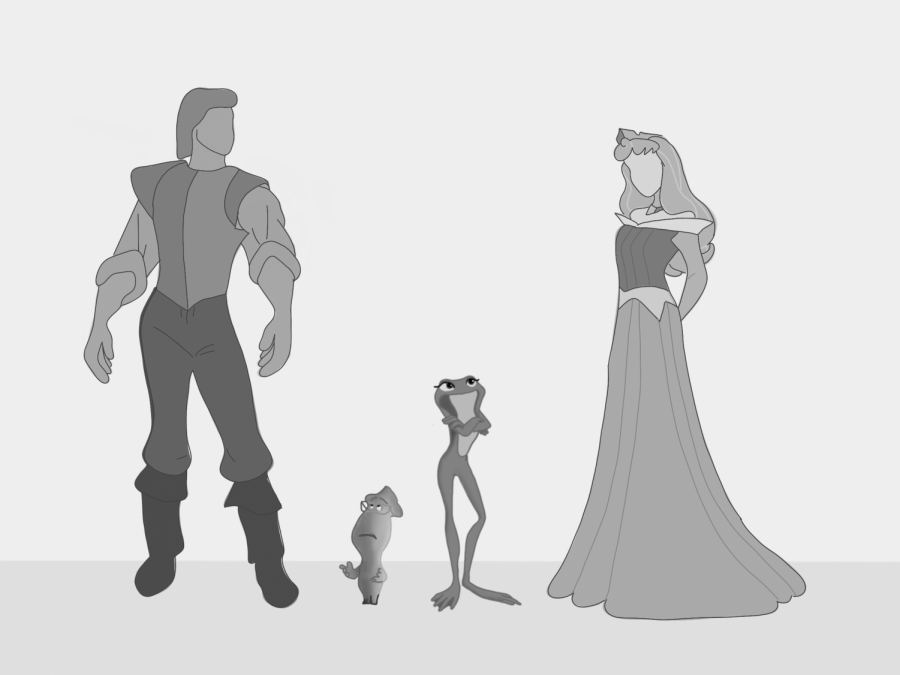A&E: Students recognize dehumanization of Black characters in Disney animated movies
Students notice the screen time for Black human characters is disproportionate compared to white human characters.
Beginning with the release of Disney’s “The Princess and the Frog” in 2009 and the 2020 film release of “Soul,” some have noticed a pattern of dehumanizing Black characters in animated films. In “The Princess and the Frog,” protagonist Tiana is transformed into a frog and remains in frog form during the majority of the film. Similarly, in “Soul,” protagonist Joe Gardner transforms into a soul for much of the film’s duration as well.
Some students at SCHS have noticed this pattern among Disney and Pixar’s animated movies and debate whether or not it was intentional. At a young age, junior Sydney Silva was unaware of the dehumanization of people of color characters in animated movies.
“When ‘The Princess and the Frog’ came out, racism wasn’t as big for me, meaning I didn’t understand it,” Silva said.
With the release of “Soul,” Silva was excited to see more Black representation in the animated film industry.
“With ‘Soul,’ I thought it was cool because it wasn’t like, here is the token Black character,” Silva said. “It was predominantly Black characters, and it showed more of their real life instead of like in ‘The Princess and the Frog’ where it showed her dream life with her restaurant and working towards her goal.”
Junior Logan Morris also noticed the dehumanization of people of color characters.
“When I first heard about it (dehumanizing Black characters), it didn’t process, but then as I kept thinking about it, I was like wait a minute, that is true,” Morris said. “There are only two movies, both with good storylines. I love ‘The Princess and the Frog,’ but what was the difference between making that character who does turn into a frog, an African American versus Belle from ‘Beauty and the Beast’ who stays human the whole time.”
Freshman Charmaine Azul, like Morris, agrees that the screen time for the human version of Black characters in “The Princess and the Frog” was a mistake that should have been corrected. Azul thinks, however, that Disney’s “Soul” was a step in the right direction for the Black community.
“‘The Princess and the Frog’ is a timeless story that we all know and love. Although this movie is considered a film that recognizes Black individuals, I can honestly say that the representation wasn’t as vivid as ‘Soul,’” Azul said.
Morris debates whether or not Disney is biased when it comes to transforming Black characters into non-human forms. She has noticed that Disney does not just dehumanize Black characters, but many people of color characters as well.
“I feel like the way Disney does it is subtle enough for people to pass by it without noticing. With ‘Princess and the Frog,’ that is the storyline, ‘Soul’ is called soul, so it is fine if they turn into souls, and in ‘Coco,’ it’s about Day of the Dead, so if he turns into a skeleton it would make sense,” Morris said. “So they do it in a way that works perfectly with the storyline, so it’s a possibility that it could be intentional.”
According to Morris, an excuse she has heard is that some animation studios are concerned about portraying people of color in a disrespectful way. She believes that the solution to this problem is to hire more people of color to work in the film and animation industry.
“They should hire more people of color to work in the field; then they could be more educated about it (racism) and learn from them and they can help,” Morris said. “Another thing is they can work to create new storylines. For example, in ‘Princess and the Frog,’ it is part of the story that the character turns into a frog, but if they create new storylines, they can’t make the excuse that it’s a classic and they’re just following it.”
Like Morris, Azul also thinks that including more people of color would help direct animation studios from remaking the same mistakes and provide more diverse entertainment.
“When I say people of color I don’t only mean Black people. I also mean other ethnicities and cultures,” Azul said. “I’d love to see more representation and with that being said, more POC film workers should be hired so they can write or direct more cultured entertainment.”


